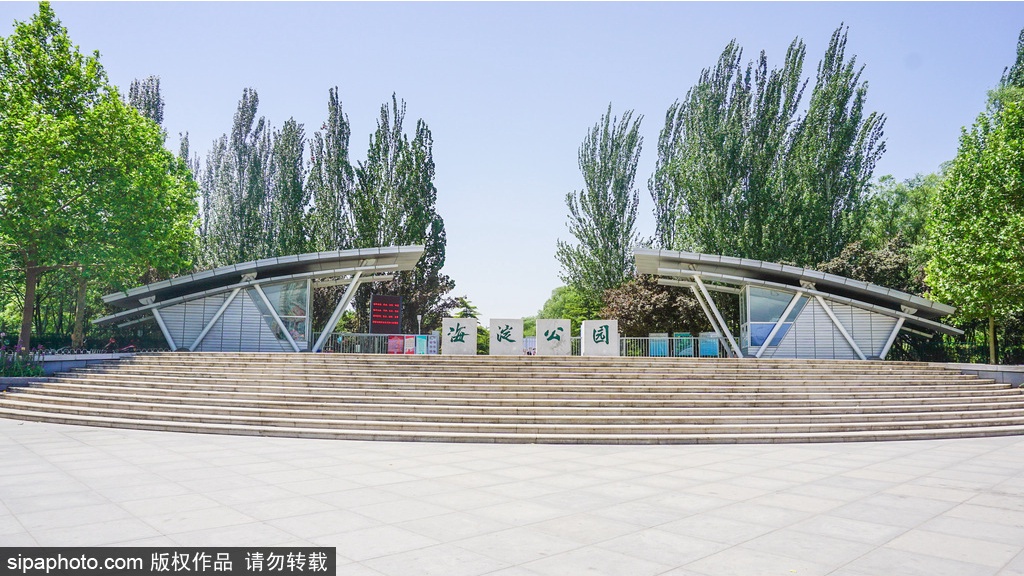The “three-mountain and five-park” in Haidian District is an important constituting part of the three main cultural belts in suburb of Beijing, which was the representative of the royal culture in Qing Dynasty. The “three-mountain” in “three-mountain and five-park” refers to Xiangshan Mountain, Yuquan Mountain and Wanshou Mountain, on which there are Jingyi Park, Jingming Park and Yihe Park, respectively, in addition to Changchun Park and Yuanming Park, they are the so called “five-park”. This article will make a general introduction to the beautiful scenes of“three parks”.
Garden of Everlasting Spring

The Garden of Everlasting Spring is situated to the south of the old Summer Palace and the west part of Peking University, with the former address of the “Tsinghua Park" constructed by Li Wei, the grandfather of Mingshenzong of Ming Dynasty. There are landscapes and buildings such as front lake, rear lake, Yihai Hall, Qingya Pavilion, Pavilion of water sound and Pavilion of Flowers in the park. It is speculated according to the notes and historical data of Ming Dynasty, the park known as “the most famous park in Beijing covers an area of 1200 mu. In Qing Dynasty, by taking advantage of the residual water veins and hill stones, the Garden of Everlasting Spring was constructed in imitation of the landscape in regions south of the Yangtze River on the former site as the detached palace for sunstroke prevention and court holding in suburb. According to the estimation based on literature drawings and archives, the whole length of garden from south to north is about 1000 m and the width is about 600 m, with covered area of 900 mu (60 hectares).
Featured by landscape architectures, the Garden of Everlasting Spring has plain buildings mainly of small round ridge roof tile top building, without colored drawings. The park wall is built by tiger skin stones, and the mountain is piled with flat soil hills but not precious lake stones. The natural and plain design style of the garden affects the royal palatial gardens such as Mountain Resort and the old Summer Palace (before the extension by Qianlong).
Garden of Tranquility and Pleasure
The Garden of Tranquility and Pleasure is a temporary imperial palace on Xiangshan Mountain in Qing Dynasty. Featured by natural scenes, the Garden of Tranquility and Pleasure has the most beautiful scene of maple leaves on the whole mountain in autumn. There are the “28 scenes” named by Emperor Qianlong. The structure of the whole garden descends along with the hillside, which is divided into three parts of the internal park, the external park and the separation park. The internal park is situated in the half-slope of the southeast part, as a place for main scenic spots and buildings. The external park is the alpine region of Xiangshan Mountain, with vast areas distributed with 15 scenic spots, most of which are optimal places for appreciation of natural scene and small garden buildings constructed in accordance with spot scenes. The separation park is situated in the north of the garden, including two buildings of Zhaomiao Temple and Zhengning Hall.
Address: West end of Maimai Street, Xiangshan Mountain, Haidian District
Garden of Tranquility and Brightness
The Garden of Tranquility and Brightness is situated outside the Xiaodongmen of Yuquan Mountain, and the west of Kunming Lake of Yihe Park. Covering an area of 75 hectares including 13 hectares of water, it is the scenery resort of west suburb of Beijing. The temporary imperial palace of “Chengxin Park” was constructed here in the 19th year of Kangxi Period in Qing Dynasty (1680). It was renamed as the Garden of Tranquility and Brightness in the 31st year of Kangxi (1692) as a royal forbidden garden. It was extended in the 15th year of Qianlong Period (1750), which was basically finished in three years.
Address: Outside Xiaodongmen, Yuquan Mountain, to the west of Kunming Lake, the Summer Palace



